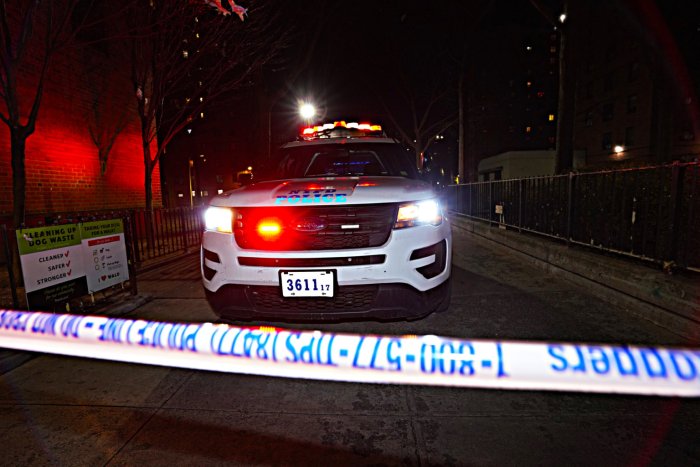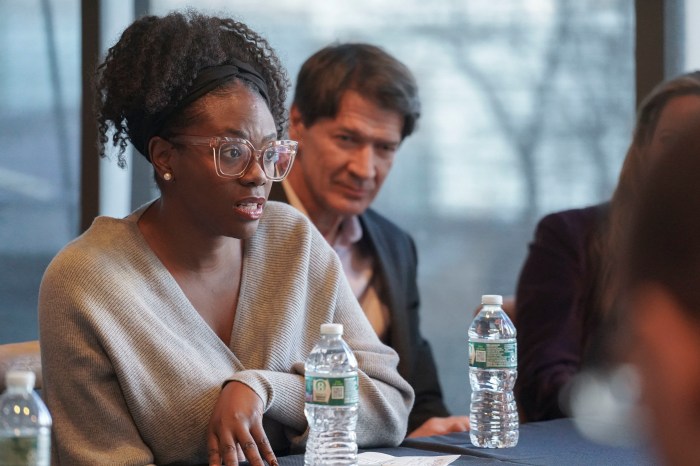By Alexander Dworkowitz
On Good Friday Catholic churches throughout the borough marked the holiday with a ceremony known as “The Stations of the Cross,” a procession re-enacting the final day in the life of Jesus Christ.
While many congregations stage the ceremony in the environs of the church, others march through their surrounding neighborhoods.
One of the largest of those celebrations is the procession of St. Michael's, whose thousands of members marched down some of Flushing's busiest streets Friday.
Surrounded by congregants dressed as Roman soldiers, the man who played Jesus dragged a large cross through Flushing, blood painted on his face.
The somber ceremony marks the events of the day of Christ's crucifixion. The congregation stopped in the streets 13 times for the reading of Biblical passages. The 14th and final station, marking Christ's burial, was held in the church itself.
“You are supposed to feel the pain and suffering Jesus went through,” said Carlos Rodriguez, one of the organizers of the march.
Founded in 1826, St. Michael's is one of the oldest Catholic churches in Queens. The church holds five masses on Sundays, two in English, two in Spanish and one in Chinese. The English and Spanish masses often fill the church, which seats close to 1,000, congregants said.
For 15 years, the church's members have been marching through the streets of Flushing, and the length of the route has continued to grow.
The marchers, who started in front of the church at Barclay Avenue and Union Street, headed down Kissena Boulevard, Ash Avenue, Parsons Boulevard and finally back to St. Michael's on 41st Avenue.
The service was conducted in Spanish, English and Chinese.
“This year we have done it to show the variety of the congregation,” Rodriguez said.
For the first time, a member of the congregation of Indian descent carried the lead cross for part of the march.
“I love this parish, and I wanted to take an active part of it,” said Moses D'Souza. “We all really get along.”
Most members of the church, however, are of Hispanic descent.
Marvin Nunez, who was born in El Salvador, said in his homeland a statue of Christ was carried through the parade and sand was strewn on the streets.
“I wish it would be like my own country,” he said.
But Nunez added that St. Michael's did a good job with the celebration, praising the diversity of its members.
“That's what's good about it,” he said. “We're all united, and we all believe in the same traditions.”
The march is one of several religious celebrations in Flushing that R. Scott Hanson, who was not at this year's event, is focusing on in his book, “City of Gods: Religious Freedom, Immigration, and Pluralism in Flushing, Queens – New York City, 1945-2000,” due to come out next year.
“Normally, people associate the city with secularism,” Hanson said in a phone interview. “It's almost like they are making the streets themselves sacred.”
Hanson noted that the members of St. Michael's paraded down many of the same streets as the large Ganesh Festival of the Hindu Temple Society of North America and the Chinese and Korean Lunar New Year Festival.
“Their routes sort of crisscross,” he said. “They are literally and figuratively on common ground.”
Reach reporter Alexander Dworkowitz by e-mail at Timesledger@aol.com or call 718-229-0300, Ext. 141.



































